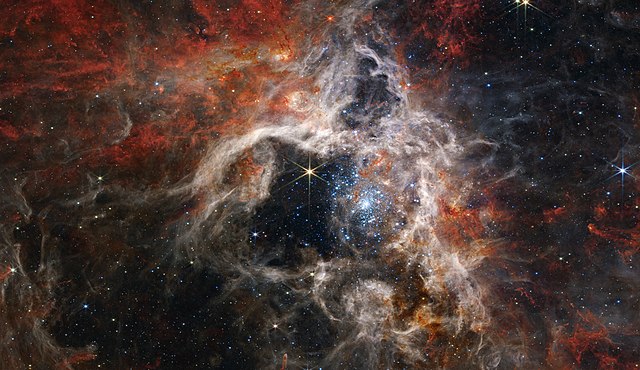The Tarantula Nebula has an apparent magnitude of 8.
Considering its distance of about 49 kpc[2] (160,000 light-years), this is an extremely luminous non-stellar object.
Its luminosity is so great that if it were as close to Earth as the Orion Nebula, the Tarantula Nebula would cast visible shadows.
In fact, it is the most active starburst region known in the Local Group of galaxies.
The closest supernova observed since the invention of the telescope, Supernova 1987A, occurred in the outskirts of the Tarantula Nebula.
An x-ray quiet black hole was discovered in the Tarantula Nebula, the first outside of the Milky Way Galaxy that does not radiate strongly.
The black hole has a mass of at least 9 solar masses and is in a circular orbit with its 25 solar mass blue giant companion VFTS 243
Source
Considering its distance of about 49 kpc[2] (160,000 light-years), this is an extremely luminous non-stellar object.
Its luminosity is so great that if it were as close to Earth as the Orion Nebula, the Tarantula Nebula would cast visible shadows.
In fact, it is the most active starburst region known in the Local Group of galaxies.
The closest supernova observed since the invention of the telescope, Supernova 1987A, occurred in the outskirts of the Tarantula Nebula.
An x-ray quiet black hole was discovered in the Tarantula Nebula, the first outside of the Milky Way Galaxy that does not radiate strongly.
The black hole has a mass of at least 9 solar masses and is in a circular orbit with its 25 solar mass blue giant companion VFTS 243
Source























